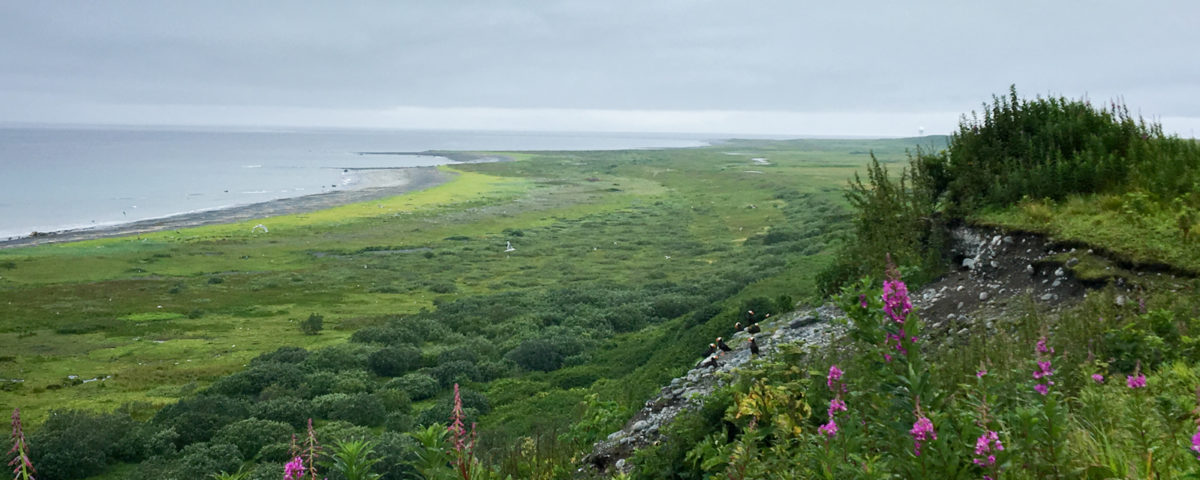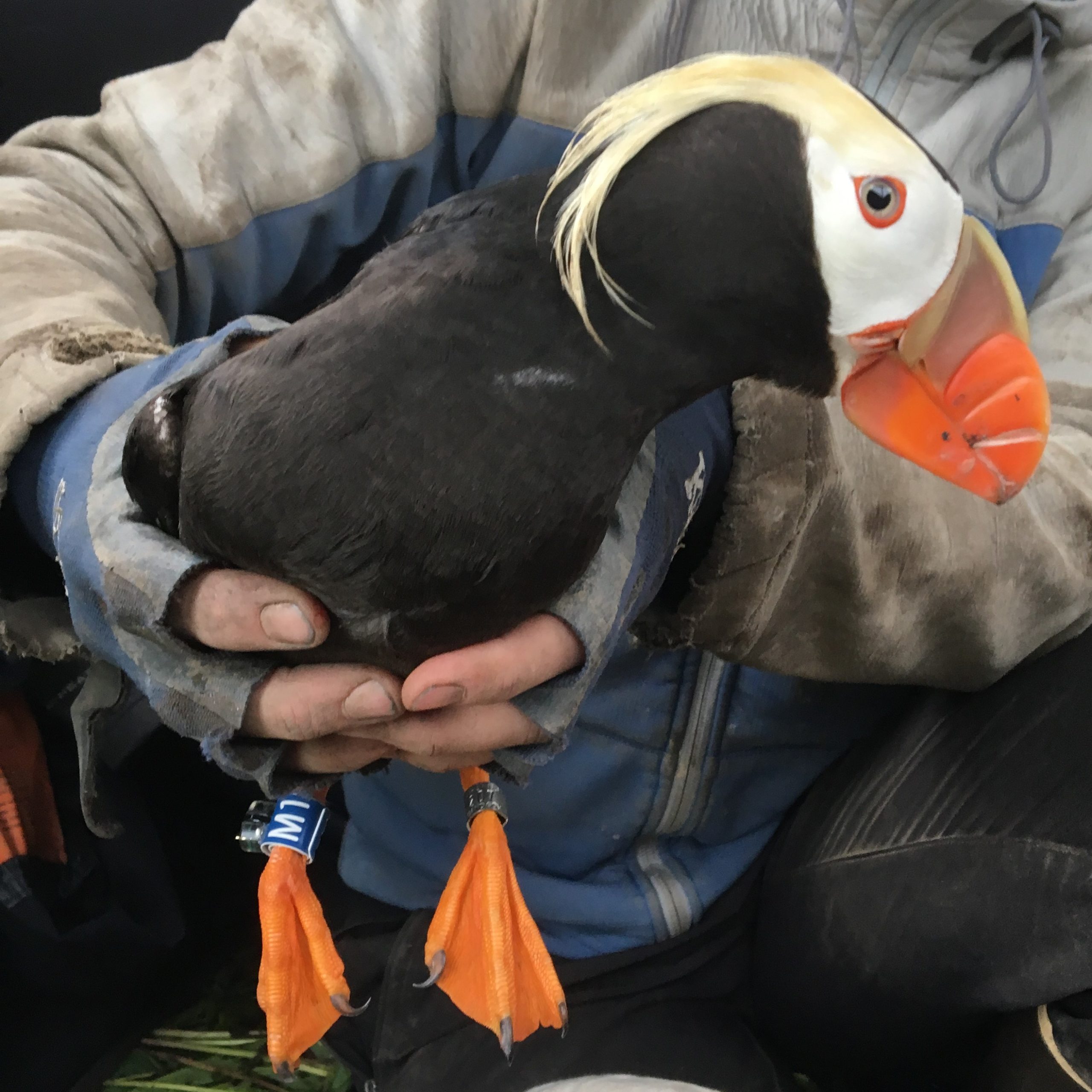Tufted Puffin Research Paper Published

September 2022
Seabirds spend approximately 75% of the year at-sea, only coming to land to nest during the summer breeding season. This highly pelagic lifestyle has complicated scientists’ understanding of marine habitat selection by seabirds, particularly during the non-breeding season, and has limited assessment of the varied risks these species face across the annual cycle. Tufted puffins are pursuit-diving seabirds that are distributed along the west coast of North America, Alaska, and the Russian Far East. Despite documented declines among west coast populations, tufted puffin populations in Alaska have historically been stable. However, new research indicates that these previously robust Alaskan populations are now declining. The reasons for the declines are unknown, highlighting the importance of resolving aspects of the species’ non-breeding ecology, distributions, and movements.
To understand the heretofore unknown migration routes and wintering areas of tufted puffins, researchers at Prince William Sound Science Center and University of Alaska Fairbanks deployed small, archival light-level geolocators on adults breeding on Middleton Island, a small Island in the Gulf of Alaska that hosts approximately 20,000 tufted puffins during the summer months. Results from the study revealed that male and female tufted puffins were short-distance migrants, wintering in the deep offshore waters of the eastern Gulf of Alaska and in the adjacent Northeast Pacific Ocean. Adult puffins departed the breeding grounds in early September and arrived to wintering areas in October, with males arriving earlier than females. Puffin distributions tended to shift southwards throughout the fall and winter season extending to approximately the northern end of Vancouver Island, British Columbia, Canada. In spring, adult puffins left their wintering areas in mid-March and arrived back to the Middleton Island area by early May.
This study provides valuable information on the non-breeding movements and distribution of tufted puffins, which can be used to inform risk assessments for the species including vulnerability to temporally and spatially explicit marine pollution, disease, fisheries by-catch, and ocean-climate variability. To learn more about the project and results, read the peer-reviewed paper that was recently published in the scientific journal Frontiers in Marine Science.
Photos above: Middle Island in full bloom and a tufted puffin fitted with a geolocator.





